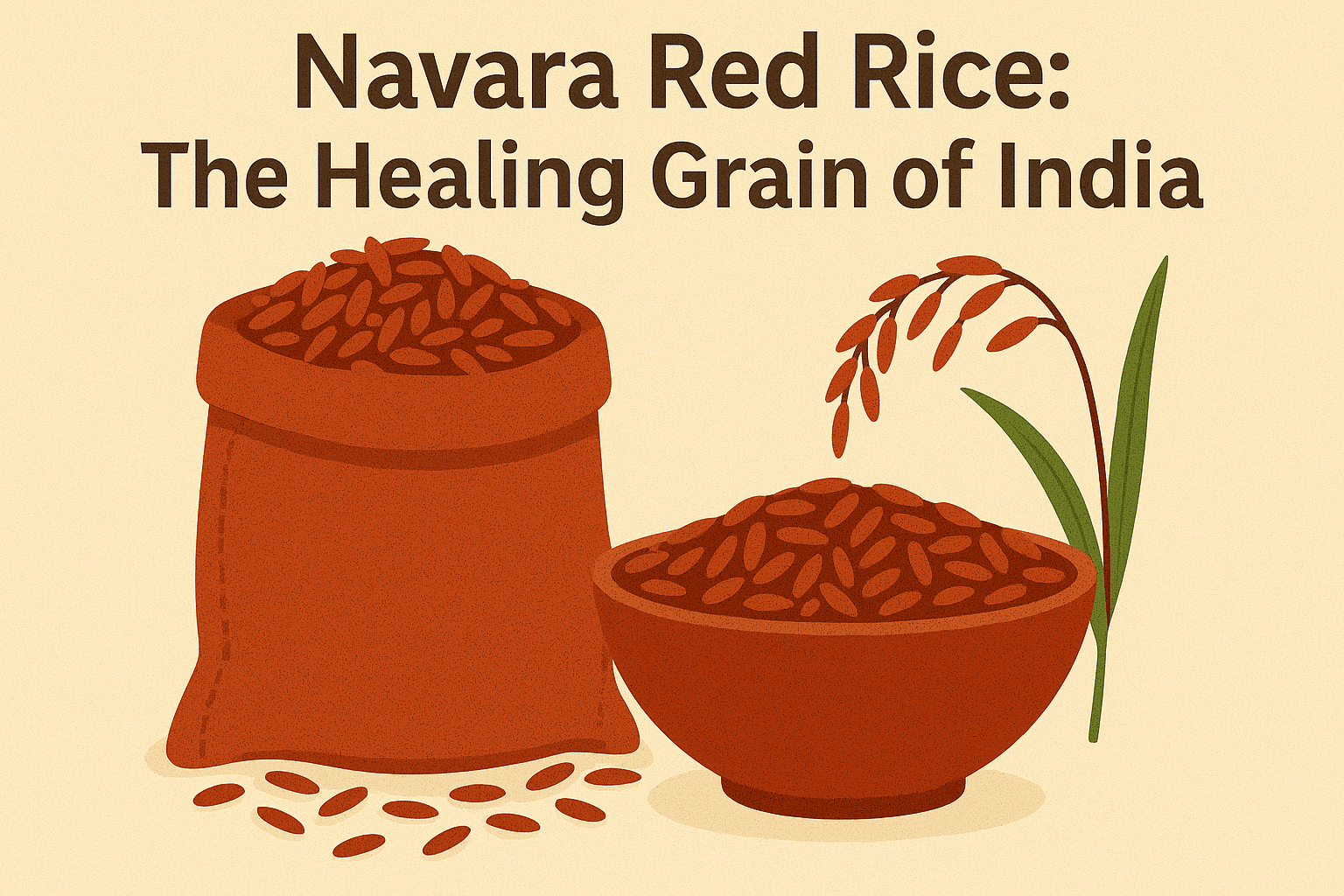In the diverse world of Indian rice varieties, Navara Red Rice, also known as Navara or Navarra rice, stands out not only for its distinct reddish hue but also for its incredible health-boosting properties. Native to the southern state of Kerala, this ancient and medicinal variety of rice has been cherished for centuries in Ayurvedic practices and traditional wellness regimens. Hashtag Magazine shares the health benefits…
What is Navara Red Rice?
Navara is a unique heirloom variety of red rice indigenous to Kerala. It has a protected geographical indication (GI tag), ensuring its authenticity and preserving its heritage. Unlike common rice types, Navara has a short grain, is deep red in color due to its anthocyanin-rich bran, and is traditionally grown using organic methods.
Often described as a “functional food,” Navara rice is not just a staple grain—it’s a therapeutic food often prescribed for convalescents, lactating mothers, and those with specific medical conditions.
Health Benefits of Navara Red Rice
1. Natural Immunity Booster
Navara rice is packed with antioxidants, vitamins, and minerals that support immune function. Its high polyphenol content helps the body fight oxidative stress and inflammation.
2. Rich in Iron – Great for Anemia
One of the most celebrated health benefits of Navara rice is its high iron content. It is particularly beneficial for:
- People suffering from anemia
- Pregnant women in need of iron supplementation
- Children with low hemoglobin levels
3. Ideal for Diabetes Management
Navara rice has a low glycemic index, making it a better option for diabetics compared to white rice. It releases sugar slowly into the bloodstream, preventing spikes in blood glucose levels.
4. Gut-Friendly and Easily Digestible
Unlike polished white rice, Navara retains its outer bran layer, which is rich in dietary fiber. This promotes:
- Better digestion
- Improved gut health
- Relief from constipation
5. Beneficial for Joint and Muscle Health
According to Ayurvedic texts, Navara rice is used in Navarakizhi—a therapeutic massage involving a bolus of cooked Navara rice that is dipped in herbal decoction and milk. It’s used in treatments for:
- Arthritis
- Neurological disorders
- Muscle wasting diseases
6. Strengthens Bones
Navara rice is rich in calcium and phosphorus, which helps in building and maintaining healthy bones. It’s especially beneficial for growing children and the elderly.
7. Supports Lactation in Mothers
Traditionally, Navara Kanji (Navara porridge) is recommended for lactating mothers, as it is believed to:
- Boost breast milk production
- Replenish nutrients post-delivery
- Aid in postpartum recovery
8. Gluten-Free Alternative
As a naturally gluten-free grain, Navara rice is suitable for those with gluten intolerance or celiac disease, offering a wholesome alternative with added medicinal benefits.
How to Use Navara Rice
Navara rice can be used in various forms:
- Navara Kanji (medicinal porridge)
- Boiled rice for meals
- Navara Paal Payasam (a sweet rice pudding cooked with milk)
- Kheer, idli, or dosa batter
Due to its dense and earthy flavor, it takes slightly longer to cook than polished rice and is best soaked before cooking.
Conclusion
Navara Red Rice is more than just a food grain—it is a treasure trove of health benefits rooted deeply in India’s ancient wisdom. Whether you are seeking to manage chronic illness, boost overall vitality, or just want to eat clean and local, incorporating Navara rice into your diet is a step toward holistic wellness. As awareness grows, this humble yet powerful rice is rightfully reclaiming its place in kitchens and healing regimens across the globe.

























